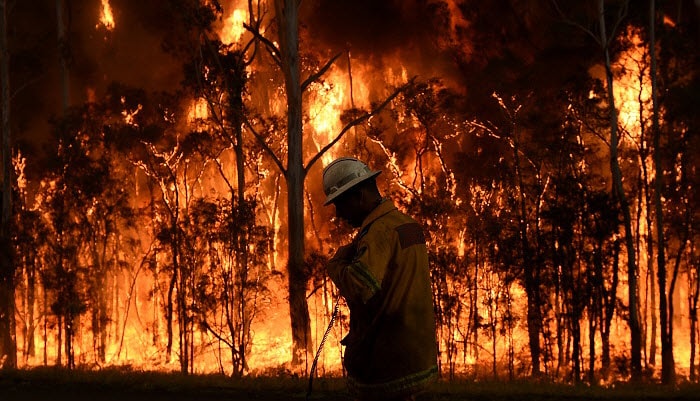Protecting Your Home: The Vital Function of a BAL Report in Bushfire Preparedness
Protecting Your Home: The Vital Function of a BAL Report in Bushfire Preparedness
Blog Article
Exactly How BAL Record Impacts Shrub Fire Security Actions
In the realm of bush fire security, the Structure Attack Level (BAL) record stands as a crucial tool that dramatically influences the security and strength of homes in fire-prone areas - BAL Report. The influence of a BAL assessment extends far beyond simple documents; it serves as the cornerstone for figuring out the proper building and construction requirements and fire security procedures essential to mitigate the risks presented by bushfires. As communities grapple with progressively serious fire periods, recognizing how the BAL report shapes these protective procedures ends up being vital for homeowners, policymakers, and contractors alike
Recognizing the Bushfire Strike Degree

Importance of BAL Report Analysis

Additionally, the BAL record analysis acts as a fundamental action in complying with legal obligations and requirements connected to bushfire security. Regional councils and authorities usually mandate the entry of a BAL report as component of the preparation and building authorization procedure to guarantee that residential or commercial properties are appropriately guarded against bushfire dangers. Falling short to perform a complete BAL record assessment can result in inadequate defense procedures, leaving residential or commercial properties susceptible to devastating bushfire incidents.
Construction Criteria Based on BAL
A comprehensive understanding of the Bushfire Attack Degree (BAL) allows home owners to implement construction criteria tailored to their certain danger profile. Building and construction criteria based on BAL are essential in alleviating the impact of bushfires on homes. The BAL ranking categorizes the potential danger a home faces throughout a bushfire on a scale from BAL-Low to BAL-FZ (Flame Area) Each BAL level represents specific construction requirements laid out in the Australian Conventional AS3959-2018 Construction of Buildings in Bushfire-Prone Areas. Residential properties categorized as BAL-Low may only call for basic procedures such as clearing particles and maintaining gardens, while those in greater BAL groups require even more durable measures like cinder displays, fireproof materials, and secured home windows. Sticking to these building criteria not only improves the architectural strength of the property but additionally improves the overall security of citizens throughout a bushfire occasion. For that reason, building proprietors must thoroughly consider their BAL score and adhere find to the equivalent construction standards to appropriately protect their homes and residents.
Implementing Fire Defense Actions
With the structure of construction criteria based on Bushfire Attack Degree (BAL) in place, the emphasis currently changes towards the practical execution of fire protection actions to fortify residential or commercial properties versus bushfire dangers. Implementing fire defense measures entails a combination of passive and energetic techniques to boost the strength of buildings in bushfire-prone locations. Passive procedures include making use of fire-resistant building products, mounting cinder guards on vents, sealing spaces in wall surfaces and roofings, and preserving a clear room around the building totally free from combustible vegetation. Active procedures encompass having firefighting equipment easily offered, such as hoses and water pumps, in addition to developing a defendable room Find Out More around the home by getting rid of plant life and having a well-maintained yard. In addition, creating an evacuation plan and making sure all residents understand emergency procedures are important parts of effective fire protection steps. By integrating both passive and energetic techniques, residential or commercial properties can substantially lower their susceptability to bushfire cases and enhance the security of passengers.
Safeguarding Residences Against Bushfires
Properly protecting homes against the harmful impacts of bushfires needs a thorough and proactive strategy to fire protection procedures. Homeowners residing in bushfire-prone locations should focus on the implementation of different approaches to improve their property's durability versus wildfires. One basic facet is producing a defensible area around the home by keeping a clear zone without combustible materials. This includes routinely cutting vegetation, getting rid of dead plants, and ensuring a risk-free range between structures and trees. Setting up fireproof roof covering products can likewise considerably lower the risk of ash strikes and straight fire contact. Additionally, sealing vents and gaps to avoid ash breach, along with including fireproof windows and doors, can assist strengthen the home's defense against bushfires. Buying a trustworthy water resource, such as a well-maintained sprinkler system or a dedicated water tank, is important for supplying water throughout fire emergency situations - BAL Report. By accepting a positive stance and incorporating these safety actions, homeowners can significantly increase their opportunities of guarding their homes versus bushfires.
Conclusion
Finally, the Bushfire Strike Degree (BAL) report plays a vital useful content function in figuring out the necessary security measures against bushfires. By examining the BAL, building criteria can be tailored to alleviate the risks and make sure the security of homes in fire-prone locations. Carrying out fire protection procedures based upon the BAL report is essential in securing homes from possible bushfire threats. It is necessary for house owners to focus on BAL assessments and abide by advised construction standards to boost bushfire resilience.
In evaluating bushfire danger to homes, recognizing the Bushfire Strike Degree (BAL) is a critical component for executing efficient security procedures. Generally, a clear understanding of the Bushfire Assault Degree is necessary for applying ample defense procedures and alleviating the influence of bushfires on buildings.

Report this page